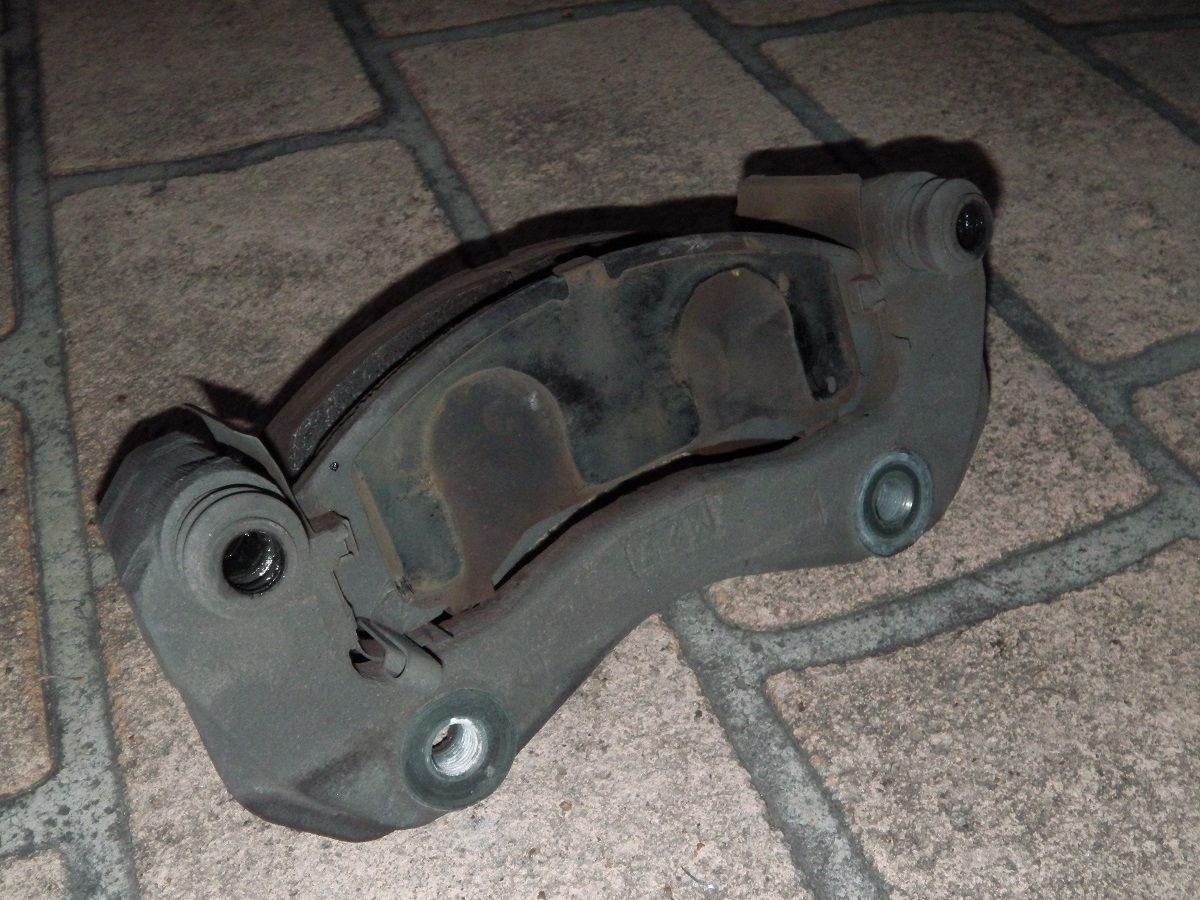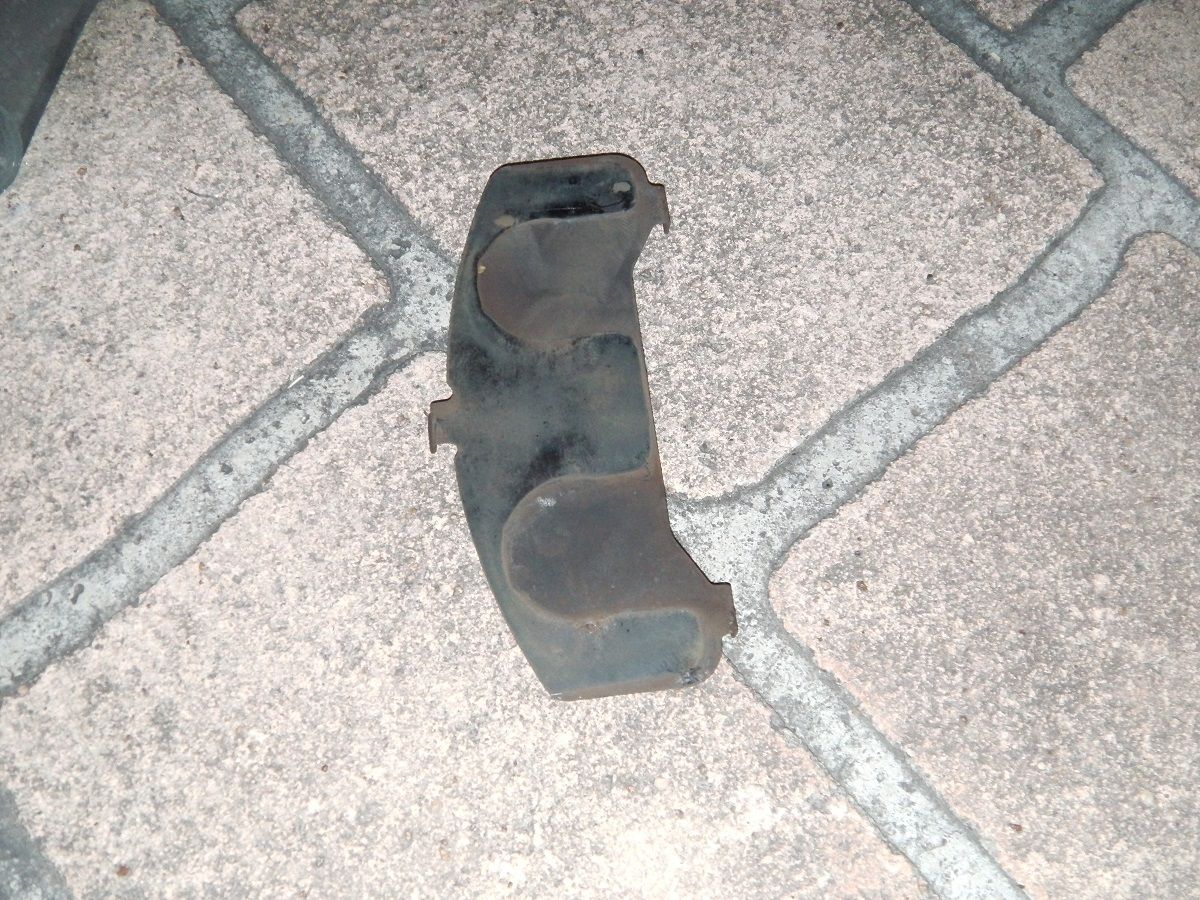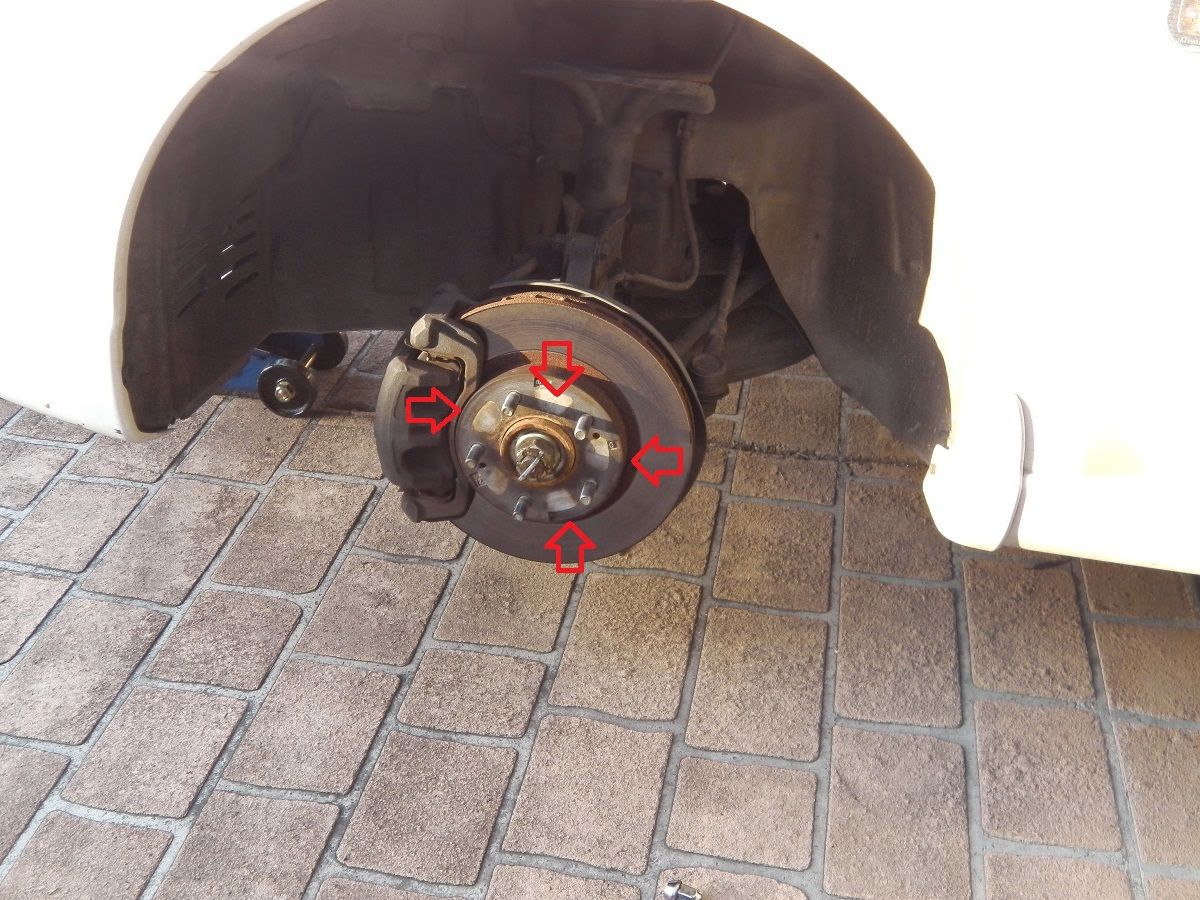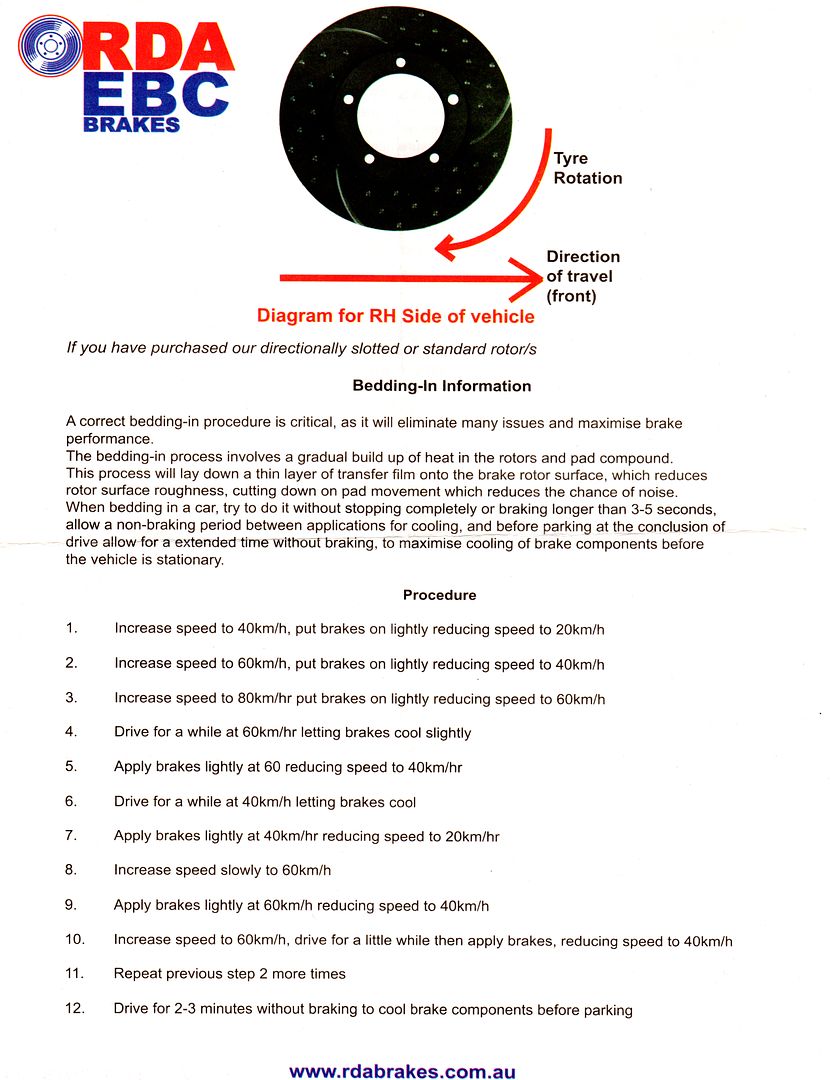Tools you will need
Tire iron or socket and breaker bar
17mm socket or spanner
Piston spreader tool or G clamp
Hammer or mallet
Rope or wire
Grease
Step 1. Crack the wheel nuts, jack up the car, put it on stands and remove the wheel.



Step 2. Remove the brake fluid reservoir cap located at the back of the engine bay on the drivers side and check the fluid level if it is full as shown in the photo below, remove some of the fluid to allow room for the fluid that will be pushed into the reservoir.

Step 3. Remove the two slider pins using a 17mm socket or spanner.


Step 4. Remove the caliper and tie it to the spring using rope or wire.

Step 5. Remove the two bolts holding the caliper bracket to the hub with a 17mm socket or spanner and take the caliper bracket off the car along with the old brake pads.

Step 6. Remove the old pads from the bracket. The old pads will have metal shims on the outside of them. If your new pads didn't come with them, swap them over to your new pads. If you don't have these it can cause squealing brakes.



Step 7. Now the rotor is not being held on by anything else but may be stuck to the hub, give it a few taps around the hub area to knock it free, be careful not to hit the studs. (Sorry, didn't get a photo of this)

Step 8. Give your new rotor a wipe with a clean rag to get the caster oil off and place it onto the car. If you are using slotted rotors, be sure that the slots are going towards the rear of the car as shown in the photo.

Step 9. Put the bracket back on and tighten up the bolts.

Step 10. Install your new pads making sure the one with the wear indicator is on the inside.

Step 11. Using your spreader or G clamp, compress the pistons all the way, using an old brake pad here will press both pistons in at the same time.

Step 12. Wipe the old grease off the slider pins and put some new high temp grease on them.

Step 13. Put the slider pins back in making sure the one with the plastic bushing goes in the upper hole and tighten them up.


Step 14. Check the brake fluid reservoir and the fluid level should have rose a bit from compressing the pistons, get a syringe or spoon and remove the extra fluid, being careful not to get it on your paint as it will eat right through it. (Didn't get a photo of this)
Step 15. Put the wheel back on with the wheel nuts finger tight.
Repeat all steps on the opposite side.
Step 16. Lower the car and tighten the wheel nuts.
Step 17. Before you go for a drive, pump the brake pedal a few times to to push the pistons back into operating position and recheck your fluid level.
Step 18. When you go for a drive, you will need to bed in the new rotors and pads. This info sheet from RDA explains it nicely. Your brakes may also smoke and smell for a bit but this is nothing to worry about and will stop after the brakes are bedded in.

